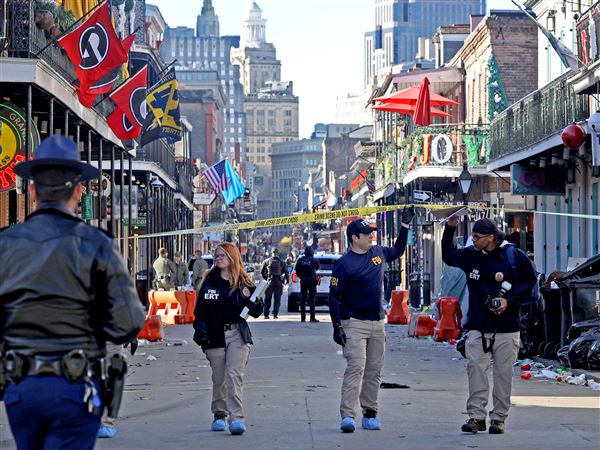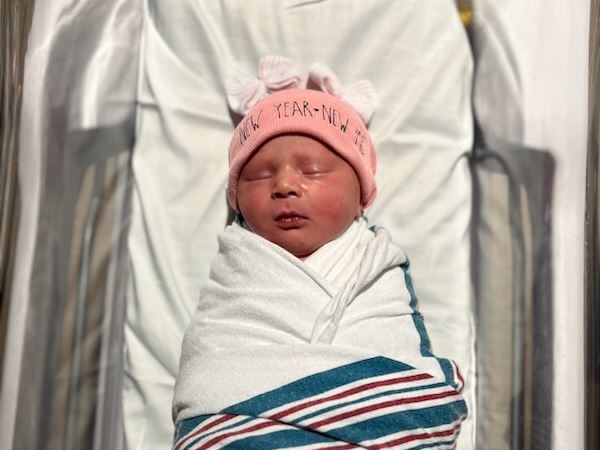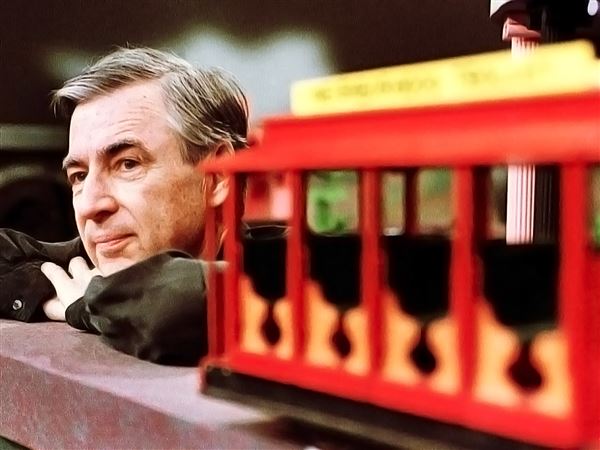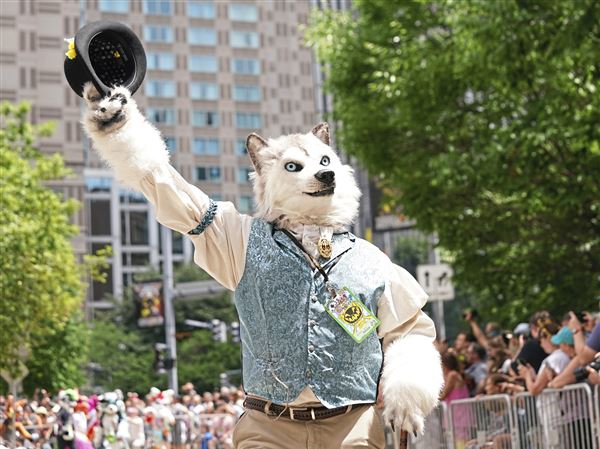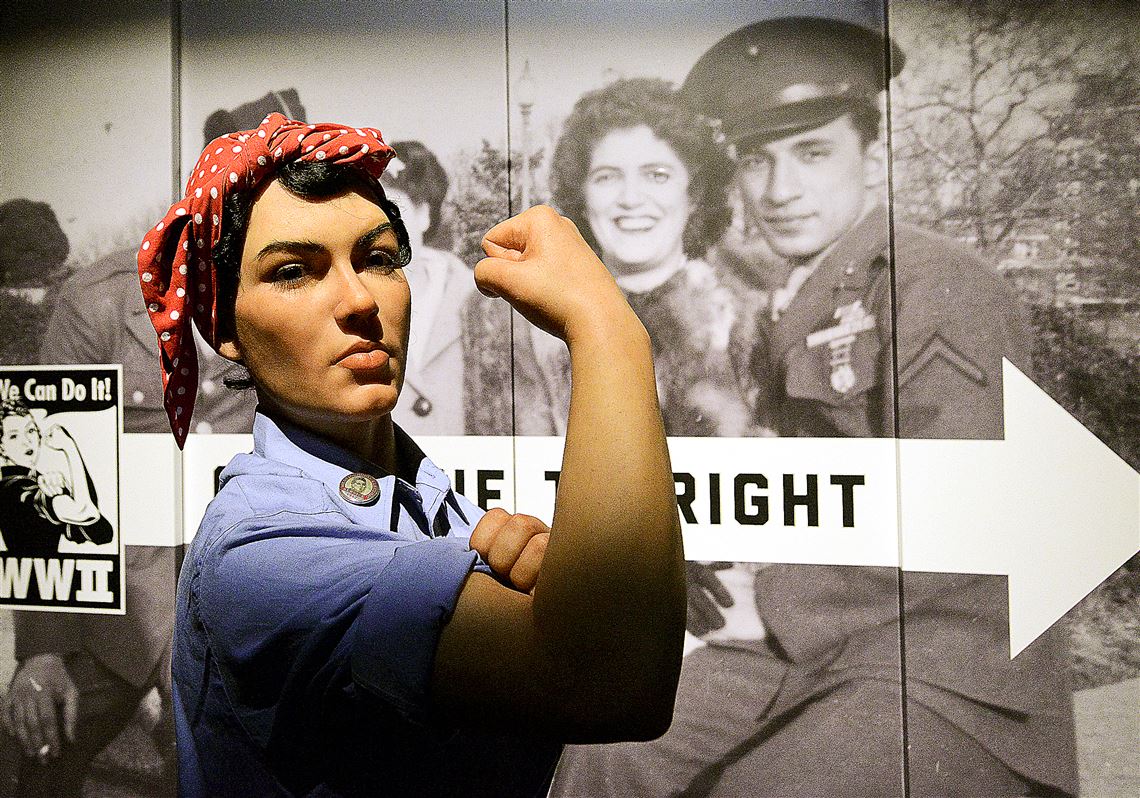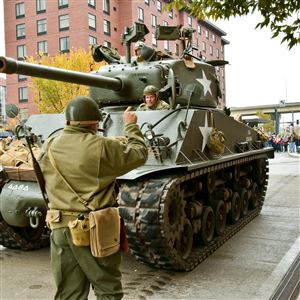Visitors to the “We Can Do It!” exhibit at the Sen. John Heinz History Center will be able to hear the voices of Pittsburgh people who helped win World War II.
The 10,000-square-foot museum show devoted equally to the homefront and the battlefront includes a “Veterans Voices” room. It features excerpts from 20 recordings made by members of the armed services from across Western Pennsylvania describing their wartime experiences.
The exhibit opens this morning with a parade of jeeps in a motorcade outside the Strip District museum that also will feature a Pennsylvania-built M3 Stuart tank. The show includes about 300 artifacts, actual military vehicles and four life-size museum figures. The lifelike models include a bandanna-wearing Rosie the Riveter, one symbol of the expanded role played by women during the war.
Uniontown native Gen. George Marshall, who served as Army chief of staff from 1939 to 1945, sits at a re-creation of his desk at the War Department. “You expect him to look up and talk to you,” History Center president Andrew H. Masich said during a media tour of the display Thursday.
Two other museum figures help tell the stories of lesser-known actors in the world conflict. Butler County’s Lt. Carl J. Woods was a member of the Tuskegee Airmen, the first group of African-Americans to serve as bomber and fighter pilots. Marine Sgt. Michael Strank, a native of Czechoslovakia who grew up near Johnstown, helped raise the American flag during the battle for Iwo Jima. Both men died in action.
The museum show is divided 50-50 to illustrate what was happening on worldwide battlefields and what was underway in factories and homes across Western Pennsylvania, curator Leslie Przybylek said. The exhibit designer was Michael Dubois.
“We want people to be able to put themselves into the shoes of Pittsburghers during that time,” Ms. Przybylek said.
Silent black-and-white newsreels and newspaper headlines help to explain the world situation in the 1930s. Visitors will be able to sit down in a circa-1939 living room, read copies of Time and Life magazines and listen to period radio broadcasts.
One of the stars of the show is the 1940 model military reconnaissance car designed and constructed in 49 days by the American Bantam Car Co. in Butler. The prototype jeep, known as “Gramps,” is on loan to the history center from the Smithsonian Institution. Behind Gramps is a 10-foot-tall photo mural of the vehicle surrounded by the engineers, managers and workers who built it.
The mural is one of about 20 towering photos that serve as backgrounds to exhibits and display cases. One image shows a group of 21 boys — black and white — with the material they collected after a successful scrap-metal drive at Pittsburgh’s Prospect Elementary and Junior High School. The picture was taken in 1942 or ’43.
Historian David McCullough and Steelers owner Dan Rooney were boys during the war, and they talk about their memories of the era in a video. Mr. Rooney recalled seeing Pittsburgh boxer Billy Conn make a unique contribution to one of the scrap drives, Mr. Masich said. The light heavyweight champion turned up with a number of his boxing trophies and added them to a pile of metal destined to be recycled into bombs and bullets.
While the United States did not enter World War II until the Japanese attack on Pearl Harbor on Dec. 7, 1941, the conflict began to claim victims even before war was declared. One of the most poignant items is a church bulletin for a Nov. 9, 1941, memorial service at Saltsburg Presbyterian Church. Navy Lt. John Justus Daub Jr. was among 114 U.S. sailors lost when a German submarine sank the USS Reuben James on Oct. 31, six weeks before Adolf Hitler declared war on the United States.
Opening-day events for the “We Can Do It!” exhibition will begin with the parade at 10:30 a.m. today. Visitors will be invited to be part of a receiving line at 10:45 to welcome local World War II veterans with confetti and American flags.
History Center admission will be free today for veterans, active military and their families, courtesy of MSA Safety. Access to opening day events and the World War II exhibit is included with regular museum admission: $15 for adults, $13 for seniors age 62 and older, and $6 for students and children. Children age 5 and younger and History Center members are admitted free. The museum is at 1212 Smallman St. in the Strip District. More information is at www.heinzhistorycenter.org.
Len Barcousky: lbarcousky@post-gazette.com or 724-772-0184.
First Published: April 25, 2015, 4:00 a.m.

